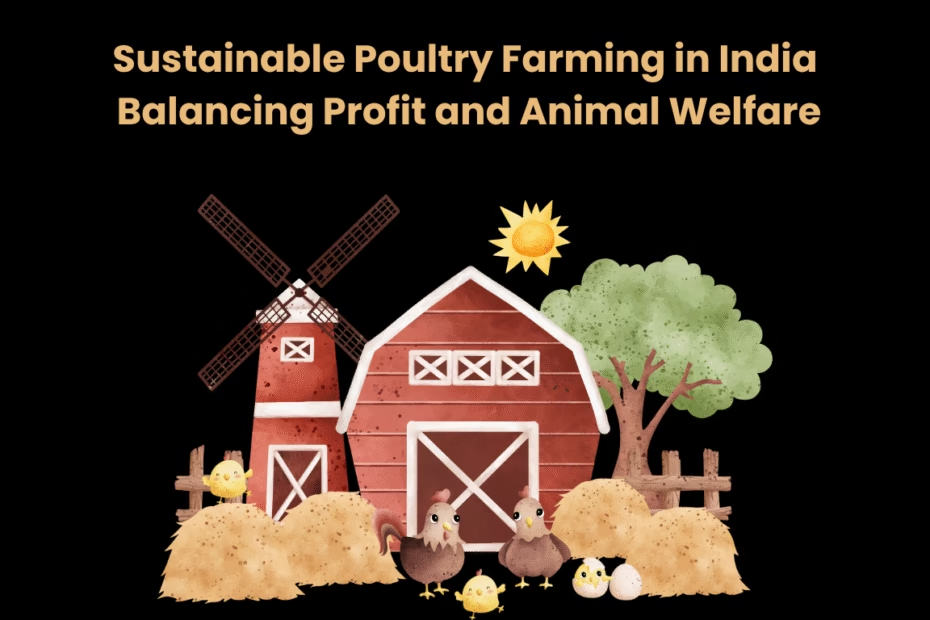Across India, the poultry industry has grown into one of the most dynamic parts of the agricultural economy. From backyard farms in Tamil Nadu to large commercial setups in Punjab, poultry farming supports millions of livelihoods and meets the growing demand for affordable protein. And it’s not just about economics, the humble chicken has become central to conversations about sustainability, nutrition, and animal welfare.
But as the industry expands, farmers are facing new challenges. Consumers are asking harder questions about how animals are treated. Feed costs are rising. Climate change is affecting productivity. The good news? Sustainable poultry farming is no longer a niche idea, it’s becoming a practical path for long-term success.
What Sustainable Poultry Farming Really Means
Sustainability in poultry farming isn’t just about cutting costs or switching to organic feed. It’s about finding balance between productivity, environmental health, and the welfare of the birds.
At its core, sustainable poultry farming focuses on three things:
- Efficient use of resources: Minimizing waste in feed, water, and energy.
- Animal-friendly practices: Giving birds space, proper ventilation, and clean living conditions.
- Economic resilience: Reducing dependence on expensive inputs and volatile markets.
In India, where poultry farming often overlaps with small-scale agriculture, these practices can mean the difference between profit and loss.
Eco-Friendly Practices Taking Root
Many Indian farmers are already experimenting with greener methods. For example, some are using solar panels to power hatcheries or biogas systems to recycle chicken waste into energy. Others are planting trees around poultry sheds to reduce heat stress and naturally filter air.
Here are a few sustainable trends that are catching on:
- Organic and herbal feed: Using locally sourced grains and herbal supplements instead of antibiotic-heavy diets.
- Deep litter systems: Turning bedding material into compost, which can be reused as fertilizer.
- Rainwater harvesting: Collecting and reusing water to reduce pressure on local sources.
- Local breed farming: Focusing on hardy Indian breeds that can thrive in regional climates with less intervention.
These approaches might sound small, but they add up to major savings and stronger long-term productivity.
The Role of Animal Welfare
One of the biggest shifts happening in India’s poultry sector is the growing awareness around animal welfare. Consumers are more informed now, they care about how the food on their plate is produced.
Better living conditions don’t just keep the chickens healthier; they also improve product quality. Birds raised in low-stress environments have better immunity, grow more evenly, and produce cleaner meat and eggs. Farmers who adopt welfare-friendly systems often find that mortality rates drop and customer trust rises.
Profit Through Responsibility
The assumption that sustainable farming costs more is slowly fading. With smart management, it often turns out to be cheaper. Using natural disinfectants, local feed mixes, or composting systems reduces dependency on expensive chemicals and imported materials.
Government initiatives like the National Livestock Mission are also encouraging farmers to adopt renewable energy systems, improve waste management, and shift toward organic certification, all of which can bring higher margins and export opportunities.
In short, sustainable poultry farming is not about choosing between profit and ethics. It’s about making both work together.
Read More: How Asset Tracking Improves Efficiency Across Industries
Conclusion
India’s poultry sector is standing at a crossroads, one road leads to quick growth at any cost, the other toward lasting progress built on balance. Sustainable poultry farming offers that balance. It protects the environment, treats animals with respect, and ensures farmers stay profitable without draining resources.
And in a country where the chicken has become both a kitchen staple and a rural livelihood, building a more sustainable future for poultry isn’t just a choice, it’s a responsibility worth taking seriously.

